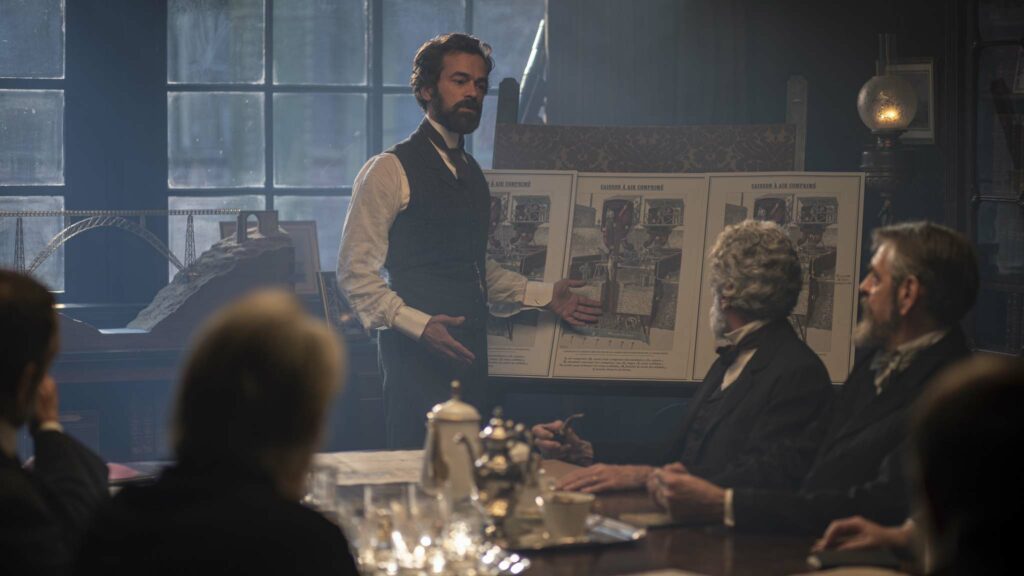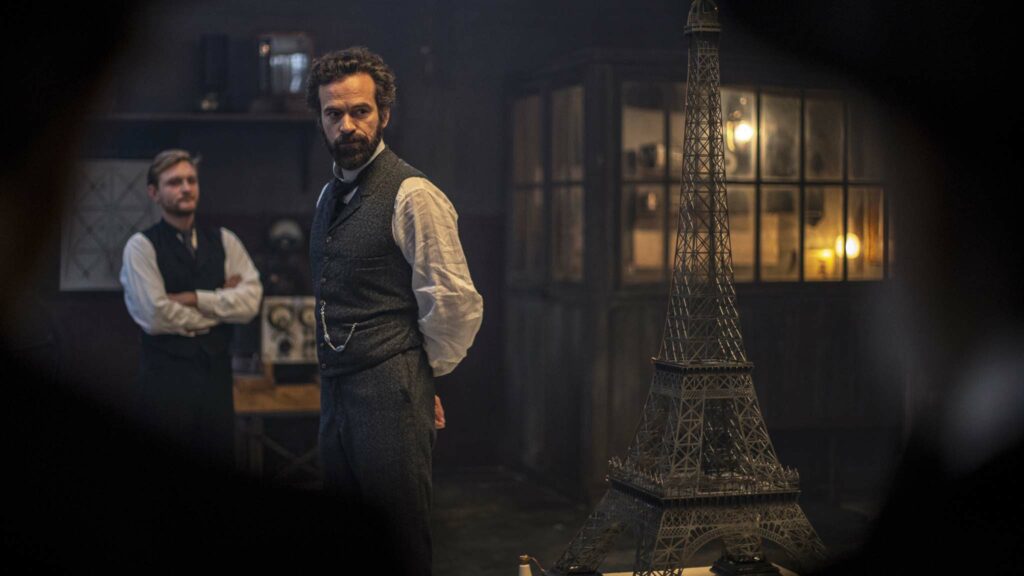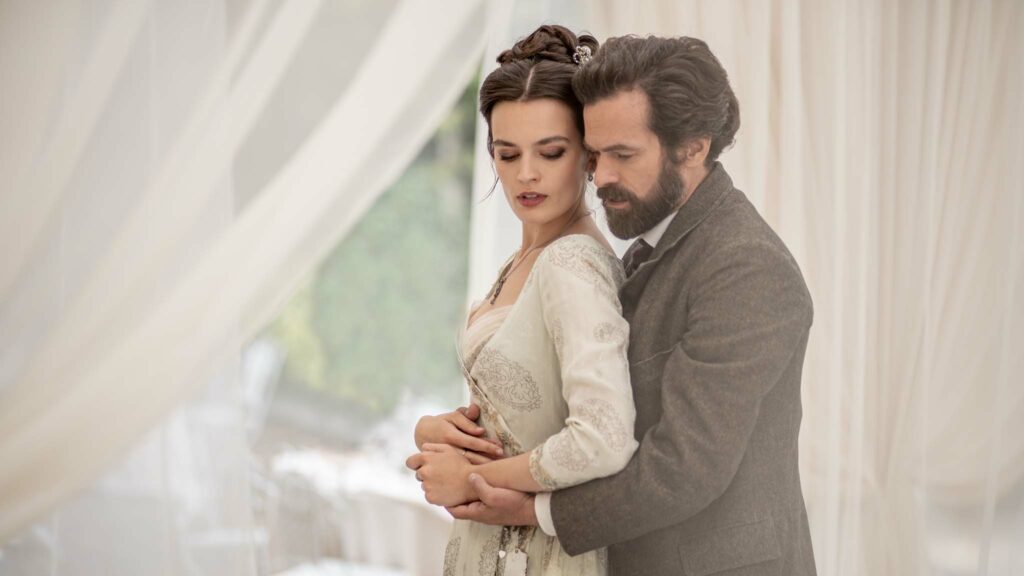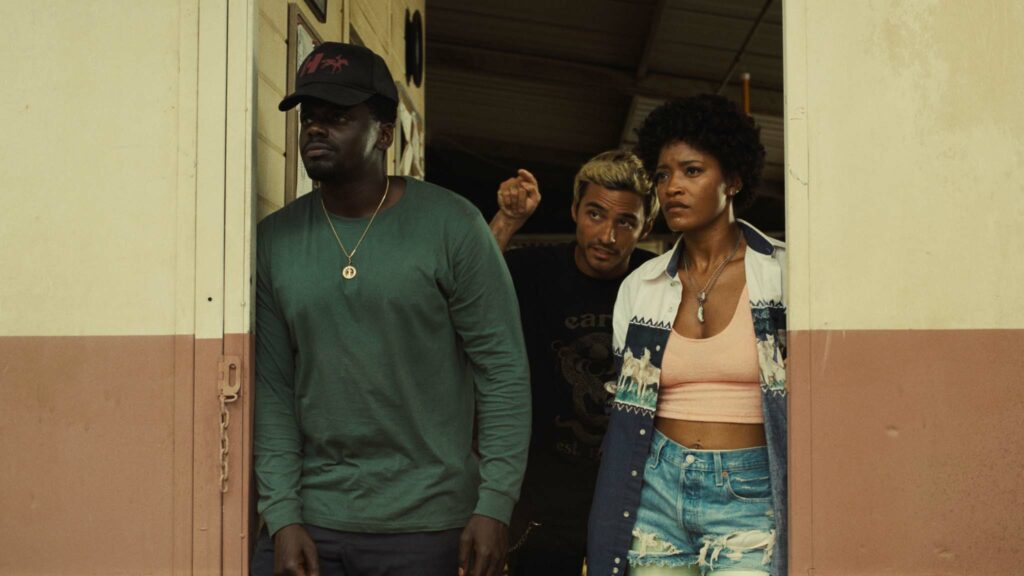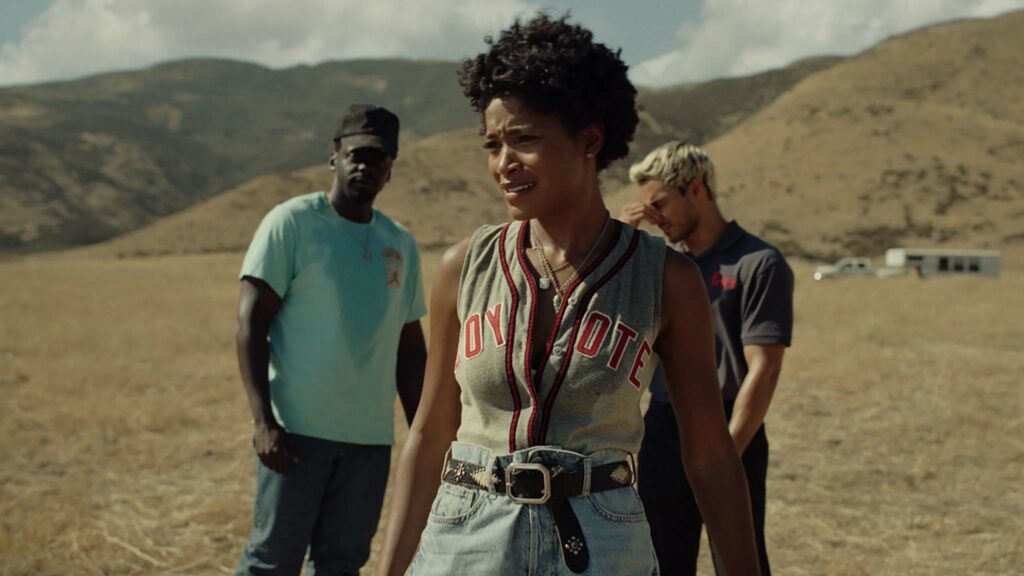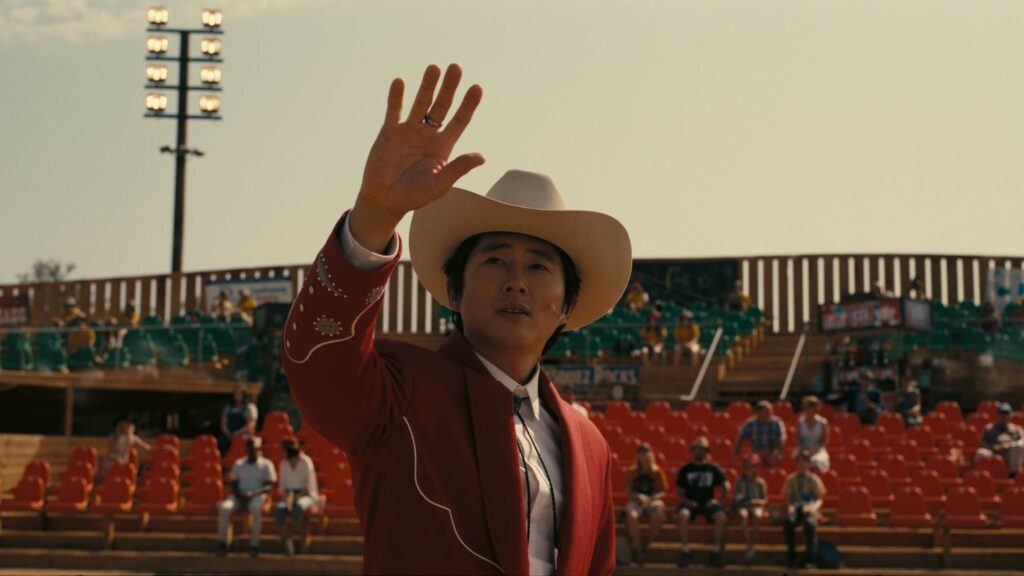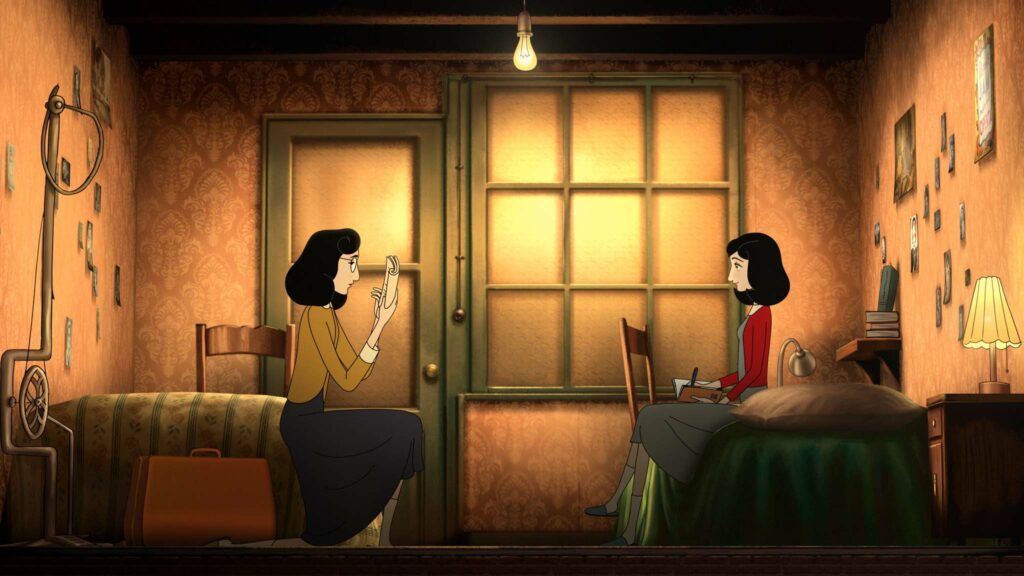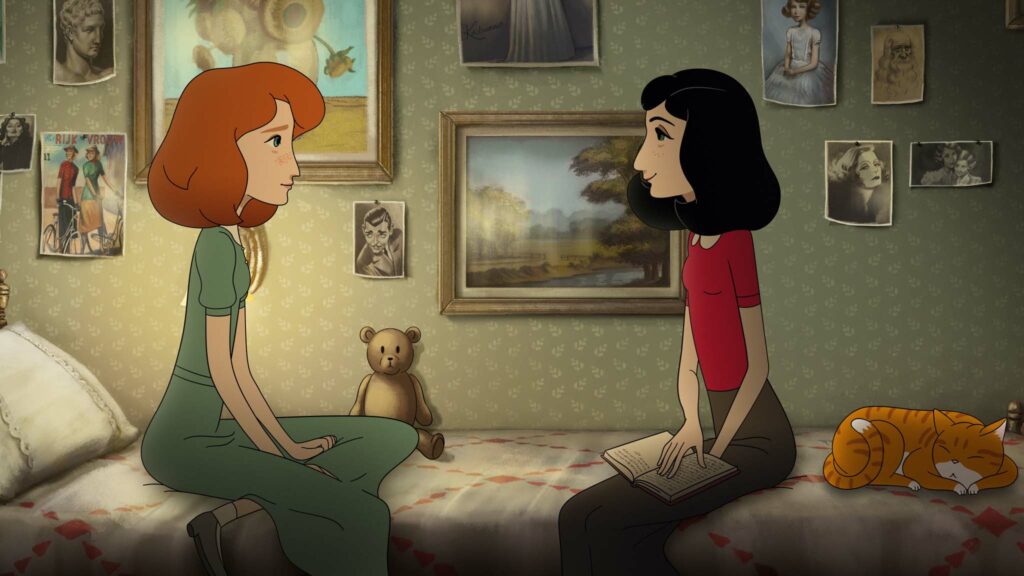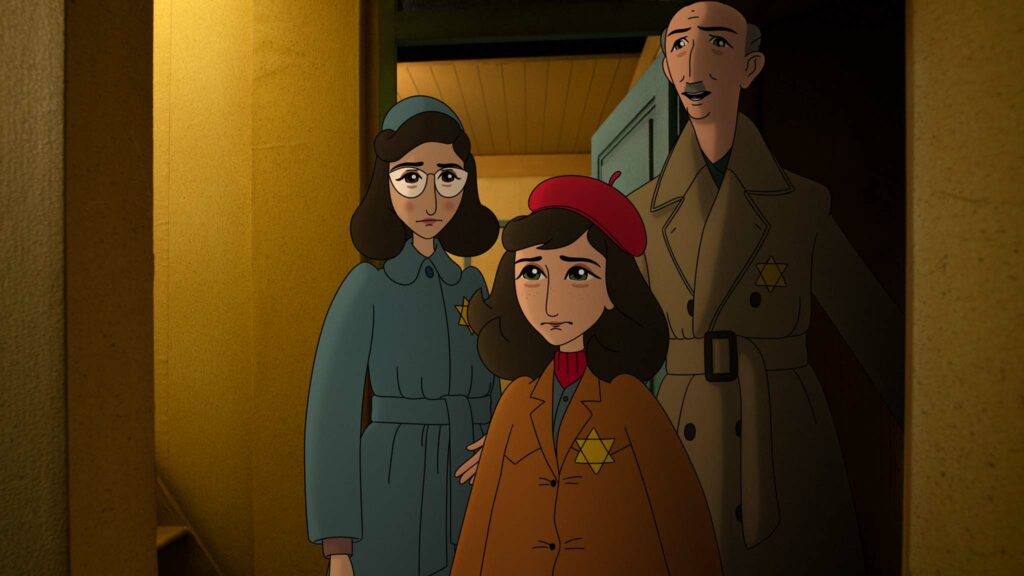Romance
Eiffel (15)
Review: The city of love provides a lustrous backdrop to a plodding historical romance, which suggests the A-shaped landmark at the beating heart of Paris was a tribute to a younger woman who beguiled Alexandre Gustave Eiffel. A screenplay credited to five writers claims to be “freely inspired by a true story” but there is no rigorous historical evidence that the tower, which dominates the skyline of the French capital, was built in honour of Adrienne de Restac.
Regardless, director Martin Bourboulon’s film swoons giddily at the prospect of amour fou as a catalyst for one of the great feats of 19th-century engineering. Eiffel sketches forbidden love over the course of almost 30 years, galvanised by simmering screen chemistry between Romain Duris and Emma Mackey, which almost reaches boiling point during an expertly choreographed dance sequence, captured in a single fluid take by cinematographer Matias Boucard. He shoots characters in silhouette against the ochre glow of a setting sun and bathes a sex scene in flickering firelight.
The script lacks the same warmth, treating the marvels of Eiffel’s design, social unrest and workforce insurrection as the footnotes of a sweeping old-fashioned melodrama. “You gaze at your tower like a man in love,” Adrienne coos at Eiffel. I wish I could regard Bourboulon’s picture with the same passion.
In 1889, three years after French civil engineer Alexandre Gustave Eiffel (Duris) accepts an honorary citizenship of the United States of America for his contribution to the Statue of Liberty, the so-called “iron magician” pursues his dream of building a metro system in the French capital for the upcoming World’s Fair. To press his case, Eiffel enlists the help of an old friend from prep school, Antoine de Restac (Pierre Deladonchamps), who is a journalist with close ties to the Minister of Commerce.
Alas, the Minister rejects Eiffel’s suggestion and demands something more ambitious to showcase France as a powerhouse of construction and design. Adding to the chorus of disapproval is Antoine’s wife Adrienne (Mackey), who happens to be Eiffel’s old flame. The engineer still holds a torch for her two decades after their painful separation. To impress Adrienne and the Minister, Eiffel vows to build a 300-metre-tall wrought iron tower, in direct opposition to residents who fear the collapse of his “streetlamp of shame”.
Eiffel isn’t constructed with the same impeccable attention to detail as the tower and Bourboulon’s film is unlikely to inspire repeat visits. The awe and wonder of the landmark’s ingenious design underpins the best scene, showcasing Eiffel’s system of sand boxes and hydraulic jacks that alter the position of the tower’s four feet by millimetres so connecting girders can slot into place. Production and costumes designs are impressive, filling the frame when raw emotions are in noticeably short supply.
Find Eiffel in the cinemas
Sci-Fi
Nope (15)
Review: Actor and comedian Jordan Peele jump-started an urgent cultural conservation about interracial dynamics with his 2017 horror Get Out starring Daniel Kaluuya as a photographer, who foolishly agrees to visit his white girlfriend’s family in upstate New York. Peele collected an Academy Award for Best Original Screenplay and earned nominations for Best Picture and Best Director. His dizzying success drew parallels to the meteoric rise of M Night Shyamalan in 1999, who was the toast of Hollywood with the supernatural thriller The Sixth Sense.
Shyamalan’s third feature after Haley Joel Osment saw dead people was the muddled alien encounter Signs. Spookily, Peele’s eagerly anticipated follow-up to Get Out and Us is also a close encounter of the second-hand kind, imagining first contact with extra-terrestrials as a stand-off between species, captured on large format IMAX cameras by Interstellar cinematographer Hoyte van Hoytema. Nope looks spectacular on a big screen, augmented with hypnotic visual effects that echo the grandeur of Arrival.
For the opening hour, Peele’s script teases an otherworldly mystery, interspersed with unsettling flashbacks to a horrifying incident on the set of a family sitcom called Gordy’s Home. Alas, the writer-director mishandles the pay-off (like Shyamalan) and overloads a bewildering second half with ideas that lack cohesion. Is this Peele’s best work to date? Nope. Does the conclusion deliver satisfying thrills? Nope. Does the overall ambition greatly exceed a filmmaker’s firm grasp? Yep.
OJ Haywood (Daniel Kaluuya) and ebullient sister Emerald (Keke Palmer) inherit the family’s ranch – Haywood’s Hollywood Horses – from their old man (Keith David), who is killed by debris falling from the sky. The siblings struggle to keep the business afloat and honour a rich filmmaking legacy that dates back to one of the earliest examples of a moving image: English artist Eadweard Muybridge’s series of photographs of a galloping horse.
OJ and Emerald proudly claim the black jockey depicted in The Horse In Motion was their ancestor. The Haywoods are under pressure to sell the ranch to former child actor Jupe Park (Steven Yeun), who runs the Jupiter’s Claim theme park on neighbouring land with his wife Amber (Wrenn Schmidt). When all hope seems lost, the Haywoods discover an unidentified aerial phenomenon (UAP) hovering over their homestead. The siblings approach electronics salesman Angel Torres (Brandon Perea) and renowned cinematographer Antlers Holst (Michael Wincott) to help them capture lucrative footage of the otherworldly observers.
Nope has the scope and visual spectacle of a summer blockbuster including nightmarish scenes of humans and livestock being sucked into the air. Kaluuya’s taciturn performance contrasts with Palmer’s boundless exuberance that injects energy at key moments when pacing reduces to a sluggish crawl. If The X-Files was correct and the truth is out there, the proof is slippery and frustratingly elusive in Peele’s film.
Find Nope in the cinemas
Animation
Where Is Anne Frank (12A)
Review: In an age of digitised self-memorialisation, the notion of a teenager making a diary of their life under duress seems like an inevitability rather than an act of defiance or a historical necessity. In the case of teenager Annelies Marie Frank, the diary she wrote during two years of concealment in the secret annexe of her father’s workplace in Amsterdam during the Nazi occupation was never intended for publication.
Dedicated to an imaginary friend named Kitty, her words were published in 1947, two years after Anne and older sister Margot died from the effects of typhus in Bergen-Belsen concentration camp in northern Germany. Anne’s father Otto was liberated from Auschwitz by the Russians and initially printed 3,000 copies of Het Achterhuis (The Secret Annex). The book has been translated into more than 60 languages and the family’s hiding place at Prinsengracht 263 opened as a museum in 1960.
Oscar-nominated Israeli writer-director Ari Folman, who grew up in a family of Holocaust survivors, attempts to connect young audiences to Anne’s life in an animated fable that visualises imaginary friend Kitty as the heroine of a politically charged story in present-day Amsterdam. Simple yet effective visual flourishes fuse the two timelines and prickle fear, especially when legions of menacing Nazis march into The Netherlands, dressed identically with white masks and sweeping black capes like soul-sucking phantoms. The subtlety and emotional power of the hand-drawn animation overshadows Folman’s script, which belabours similarities between the persecution of Jews during the Second World War and the forceful deportation of refugees from Europe.
On a stormy night in contemporary Amsterdam, Kitty (voiced by Ruby Stokes) materialises from the pages of the diary, frozen in time and unaware of the grim fate of Anne and her loved ones. Invisible to visitors of Anne Frank House, Kitty observes a boy called Peter (Ralph Prosser) picking tourists’ pockets and she ultimately abandons the safety of the annexe to visit key monuments around the city dedicated to the little girl’s life. Kitty’s odyssey sparks flashbacks to Anne (Emily Carey) entering the sanctuary with older sister Margot (Skye Bennett) and parents Otto (Michael Maloney) and Edith (Samantha Spiro). The family maintains hushed silence during daylight hours to avoid detection and Anne documents her affection for Peter van Pels (Sebastian Croft) in the pages of the diary, a gift on her 13th birthday.
Where Is Anne Frank is heavy-handed with the timely political rhetoric but the inventiveness of Folman’s visual storytelling constantly impresses, such as when Anne and Peter appear to wander through the circuitry of a transistor radio. Vibrant artistic choices provide easy access for young audiences to one of the darkest chapters in European history and its aftermath.
Find Where Is Anne Frank in the cinemas


